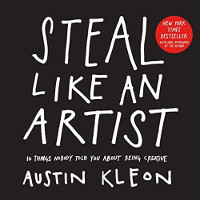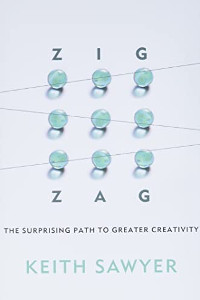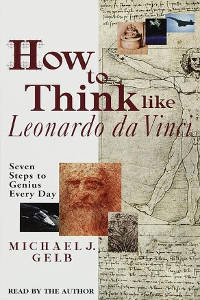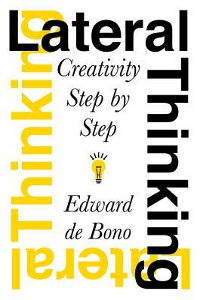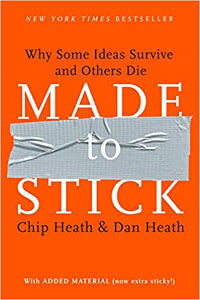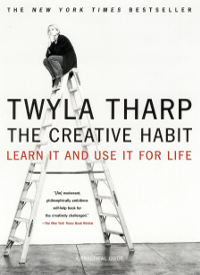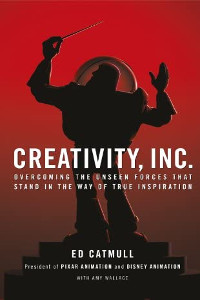Creativity is not only for art professionals, and it isn’t related to a specific career path, hobby, or interest.
Instead, creativity is everywhere in daily life.
And you are a creative genius.
Every human has tons of creative potential. We use part of it every day to solve problems, come up with innovative ideas, and create stuff and ideas.
Nurturing your creative capacity is joyful and will lead to unique opportunities that can take your life to the next level.
So how do you become more creative?
That’s exactly what you will learn with this selection of the 9 best books on creativity for beginners.
So let’s dive in!
P.S. Learn more about Audible if you prefer audiobooks.
Best books about creativity per topic
There are hundreds of books about creativity. And for this review, I’ve looked into many of them. Below, you will find my selection of the best books on creativity for beginners based on the following:
- How relevant the content is for beginners.
- The quality of the information, tools, and techniques.
- The author(s) and their qualifications or experience.
- Reviews from others.
This list contains books that tackle creativity from various angles. So you might enjoy the concepts even if you’re an experienced creative artist.
And if you’re just exploring your creative potential, you will love this list. Here is the selection:
- Best for beginners to gain perspective: Creative Confidence
- Best creativity book to get started: Steal Like an Artist
- Best for building exposure: Show Your Work!
- Best step-by-step approach: Zig Zag: the Surprising Path to Creativity
- Best on timeless principles: How to Think Like Leonardo da Vinci
- Best on creative idea generation: Lateral Thinking
- Best to develop your ideas: Made to Stick
- Best on creative habits: The Creative Habits
- Best creativity business book: Creativity, Inc.
#1: Creative Confidence: Unleashing the Creative Potential Within Us All
Do you question your creative potential?
Then you will love this book.
Creative Confidence is about breaking the limiting belief that only artists are creative. And instead, it empowers you to unleash your creative potential, regardless of your goals.
After all, you use creativity every day.
Everyone faces problems and challenges that require solutions. And while you may not think of these as creative, they often are.
This book shares big ideas and concepts that will:
- Change your perspective around creativity;
- Shift your self-limiting beliefs on the topic;
- Demonstrate why you should embrace your creative genius;
- And share exercises to develop your creative muscles.
This is an excellent book if you’re just starting and lack confidence. So if you’re unsure about your creative potential, read this book.
#2: Steal Like an Artist: 10 Things Nobody Told You About Being Creative
Say you found enough self-belief to start your creative journey. But now, you feel like you’re up for a massive challenge.
Where do you start to unlock your creative genius?
If that sounds like you, read this book on creativity. Austin Kleon is a writer who draws. And in his book, he will give you a reality check on how success really works.
This book will work magic for you if you:
- Struggle to stand out from the crowd;
- Seek insights to become a great artist;
- Experience pressure from yourself and others;
- Look for practical ways to overcome imposter syndrome;
- Want to find your own style and thrive as a creative.
Overall, this book is very insightful and provides practical ways to overcome the mental challenges you’ll face on your creative journey.
It’s a great read if you’re just starting and experiencing pressure, feel like an imposter, and seek your unique style.
#3: Show Your Work! 10 Ways to Share Your Creativity and Get Discovered by Austin Kleon
Show Your Work is another book by Austin Kleon. And his message in this one is clear: share what you know, what you’re creating, your process, and give credit to those around you.
Simple, right?
The secret to success is sharing something daily. And that has never been easier with the many social media platforms.
So why doesn’t everyone create and share?
That’s the tricky part.
Most people fear the judgment of others. So we want to become good before we feel encouraged to share our work with the world. The problem is that we rarely feel ready or good enough.
This book will change that.
No matter if you’re on a painting journey, starting a side hustle, learning a new skill, or freelancing as a photographer, here’s how this book will empower you:
- Practical tools to start sharing your work;
- Insights that empower you to share your process;
- Changes your perspective on being a creative genius;
- Helps you overcome imposter syndrome;
- And encourages you to stay consistent.
Overall, you want to read this book if you started or plan on starting your creative journey, whether drawing, starting a business, or anything in between.
#4: Zig Zag: the Surprising Path to Creativity
Dr Sawyer is an expert in creativity and innovation. And in his book, you will learn a simple but systematic step-by-step Zig Zag model to unleash your creative potential.
The idea is that you can use this method in daily life, whether making decisions at home, innovating at work, or taking your hobby to the next level.
Why is this book so empowering?
- A systematic step-by-step approach to guide you;
- Insights to challenge your perspective and beliefs;
- Practical tips that can be applied in daily life;
- Tools to produce and combine more ideas;
- Instills a positive mental attitude.
Overall, this book provides inspiring insights and practical tools to unleash your creativity in everyday life.
#5: How to Think Like Leonardo da Vinci: Seven Steps to Genius Every Day
Leonardo da Vinci lived around the 1500s and was famous for his ability to master and combine many skills. These include design, art, geology, metalworking, drafting, chemistry, leatherworking, woodwork, drawing, painting, and sculpting.
He then used these skills to design remarkable innovations for that time, including a tank, parachute, helicopter, and more.
How is this relevant to your creativity?
Well, you might be wondering how Leonardo pulled this off. And while he certainly had talents, Gelb studied the life of Leonardo and concluded 7 principles that drove his success.
It’s those seven principles you’ll learn about in this book:
- Curiosity: How to improve your learning process?
- Knowledge: How to adopt a practical and scientific mindset?
- Refinement: How to think big picture but also nurture detail?
- Ambiguous: How to embrace paradox and complexity?
- Balance: How to merge art and science for more success?
- Health: How to maintain your physical and mental abilities?
- Connection: How to recognize and use the fact that everything in the world is connected?
The book contains many exercises to master these principles. So if you’re curious about da Vinci and want to learn more about the above principles, you will love this book.
#6: Lateral Thinking: Creativity Step by Step
Do you constantly need to come up with creative ideas in your career, business, or personal life?
Lateral Thinking is the book for you.
Edward de Bono was a physician, psychologist, inventor and author who came up with new ideas about how we think. His most famous book, Six Thinking Hats, helps organizations thrive through more thoughtful thinking processes.
In this book, de Bono touches on the concept of creative thinking and how to come up with innovative ideas. You will learn the following:
- How to challenge the status quo;
- How to become an idea-generation machine;
- Touches on the topics of creativity and communication;
- How to interrupt existing thinking patterns;
- And how to discover new ones.
This book is for anyone who would like to challenge and take their thought process to the next level. The book also contains many examples, making it a joyful and easy read.
#7: Made to Stick
While the previous book teaches you how to come up with many different ideas, this book teaches you how to make them stick.
What’s the difference between a good and a GREAT idea?
Chip and Dan Heath explain that concept through the simple acronym: SUCCES. And once you learn this concept, it’s easy to remember and use in everyday life.
It’s a concept I use for my blog posts too.
The acronym stands for:
- Simple;
- Unexpected;
- Concise;
- Credible;
- Emotional;
- Stories.
Understanding these concepts will not only make your ideas more sticky, but it will also make communicating them easier. Perfect if you want to make a difference in the world or influence decision-makers.
#8: The Creative Habit: Learn It and Use It for Life
Creativity is a habit that you can learn and develop.
That’s the short version of this book from Twyla Tharp. And although she was a dancer and choreographer, the work habits in her book are suitable for any creative endeavor.
She states that there are no natural geniuses.
Instead, everyone can become creative. And if you’re willing to put effort into learning and practicing, you will unlock your creative potential.
In this book, you will learn how to:
- Develop practical habits to encourage creativity;
- Discipline yourself to achieve creative success;
- Appreciate and embrace periods of solitude;
- Surround yourself with the very best;
- Approach complex and challenging tasks.
This book is exceptional for anyone struggling to stay consistent on their creative journey, whether in business or arts.
#9: Creativity, Inc.: Overcoming the Unseen Forces That Stand in the Way of True Inspiration
Last but not least in this list is Creativity Inc., based on the stories of Ed Catmull, one of the founding members of Pixar Animations, together with Alvy Smith and Steve Jobs.
This book tells the days of Pixar Animations. And you will love this book if you like the earlier movies, like Toy Story and Finding Nemo.
But this book hits creativity from a different angle.
It’s more of a book about creativity in business. It’s about how leaders can inspire teams to become more creative in their organizations.
Here’s what’s included:
- Personal stories from Catmull, the many challenges he faced and how he dealt with them, including lessons learned.
- Catmull’s insights on how to create, build and grow a creative but sustainable culture in business.
- The following chapters discuss organizational and leadership topics and principles to foster a healthy creative environment.
- And you will learn how they implemented these principles at Pixar Animations to make it one of the greatest animation companies.
Overall, this is the best book on creativity for beginners if you want to learn more about Pixar and how they navigated the many challenges – especially when it comes to creativity and cultivating a sustainable creative environment.
Summary
Creativity, everyone has it.
However, to unleash your creative potential, you must practice it daily in some way. That includes physical creations, like any form of art, or tangible stuff, like creative ideas to improve your life.
And the 9 best books on creativity for beginners will guide you, regardless of where you are in your journey. Pick up the most relevant book to your situation.
It’s time to unleash your creative genius!
And if you prefer audiobooks, you can get a free trial with Audible.
Want to level up and unleash your full potential?
At Insideout Mastery, I’m dedicated to helping people like you make life more joyful and meaningful.
So, if you want to unleash your full potential, then make sure to sign up below to get the best tips and strategies to level up your life!


